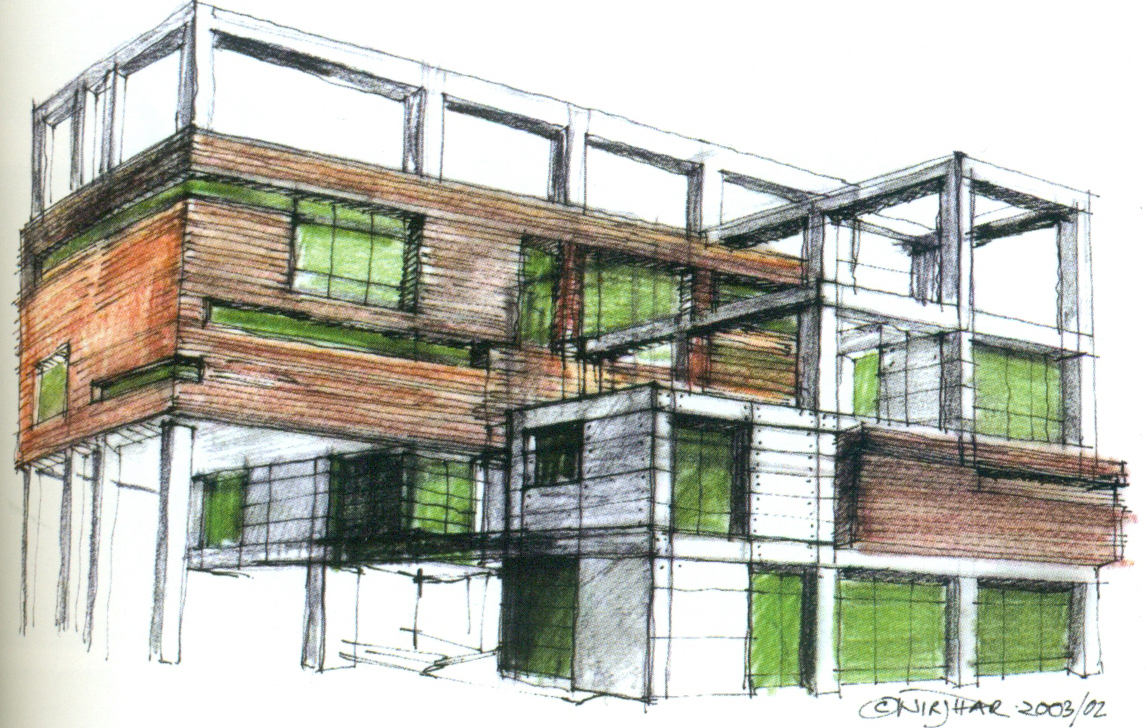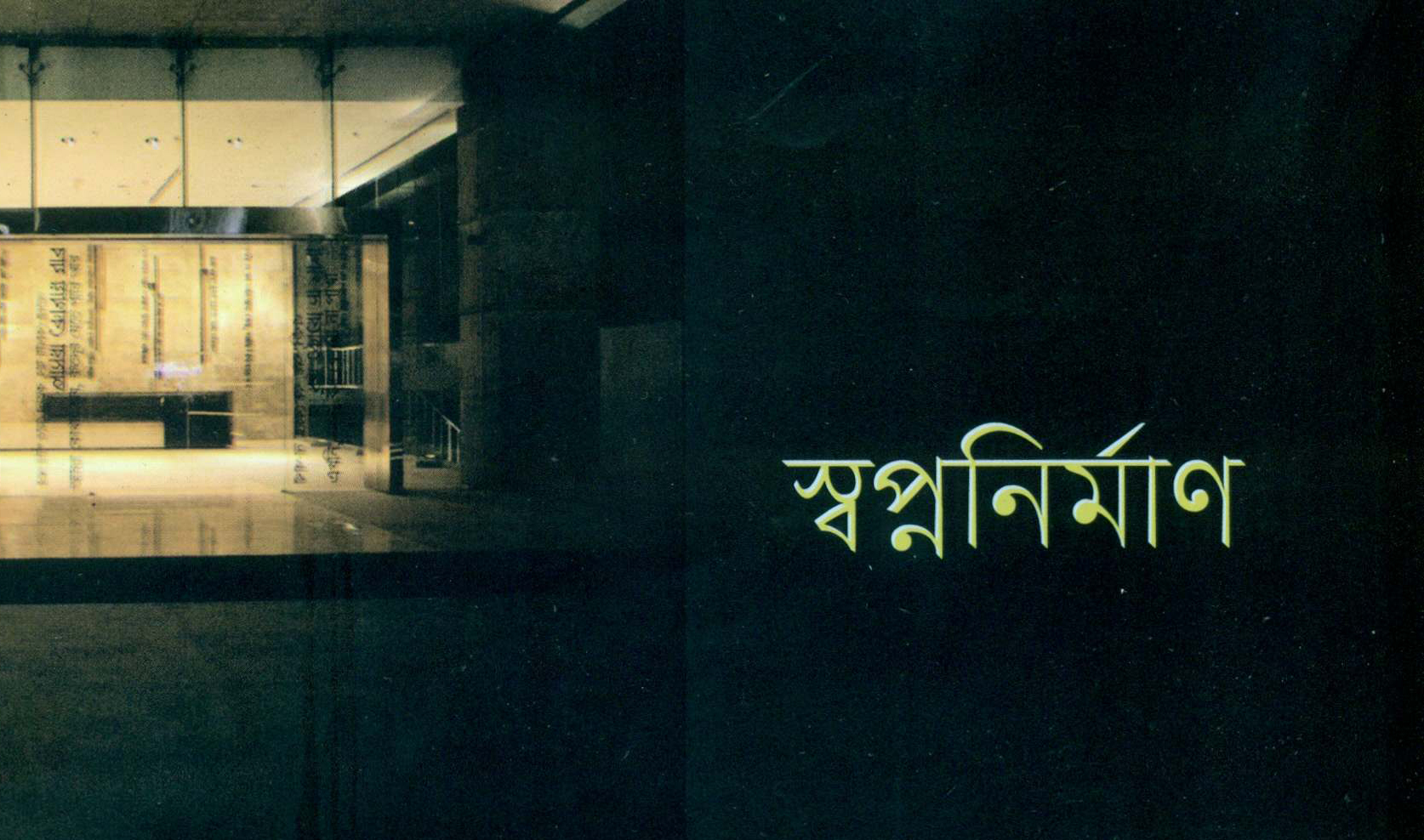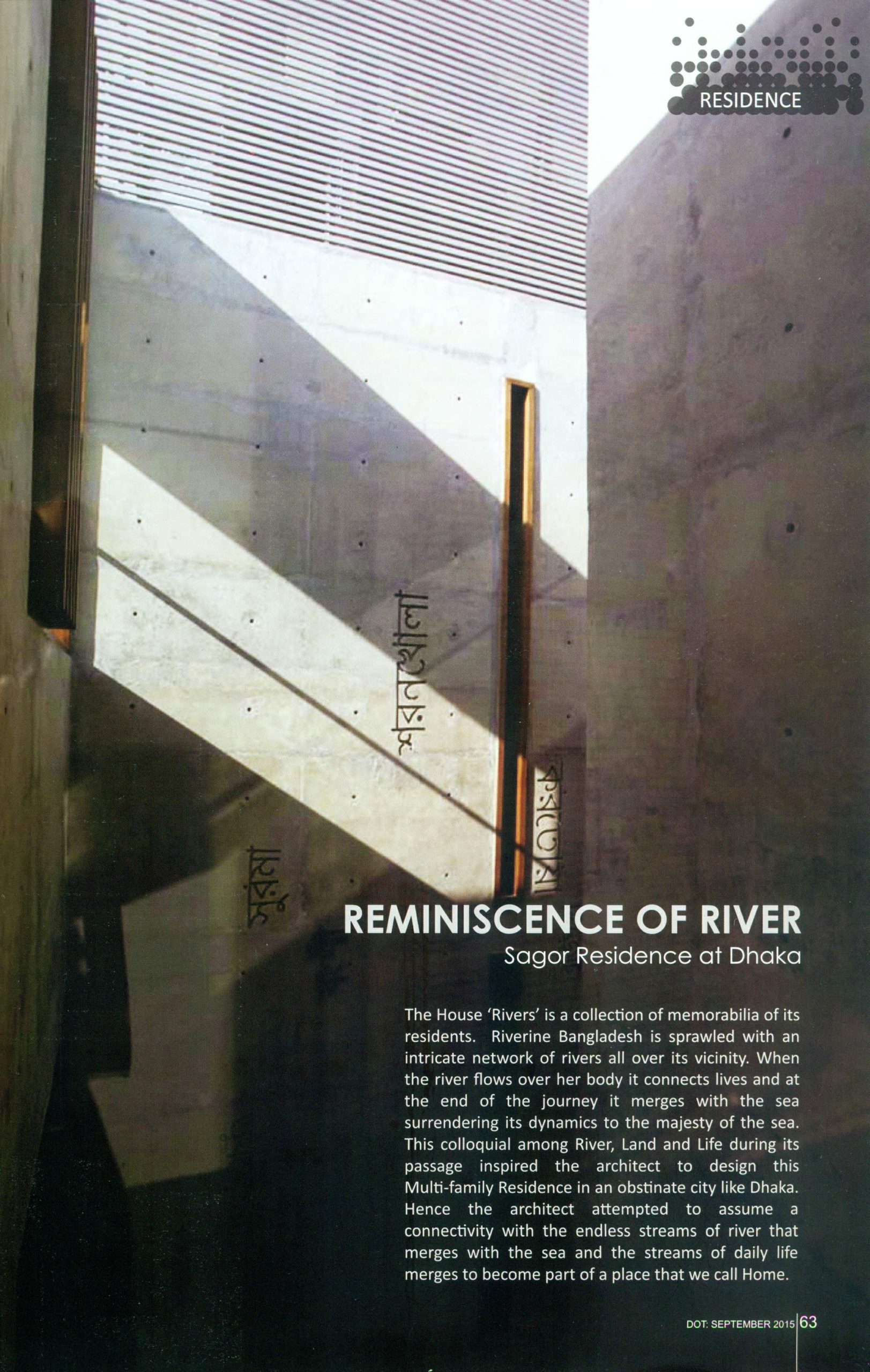The historical city of Dhaka is heir to a rich cultural legacy of architecture which can be seen in the surviving buildings and monuments, and certain arcas of the city. The temples, mosques, palaces and havelis of the kings and nawabs, and the narrow dark lanes and horse-drawn carriages of Old Dhaka, have been slowly replaced by the emerging urbanised city. In this fast changing scenario, the buildings and interiors designed by Enamul Karim Nirjhar are statements of modernity that yet retain a traditional flavour.
Nirjhar is a young man of many talents. Starting off as a graphic designer while studying architecture, Nirjhar was invited to contribute a design for Unicef cards, by the Geneva Head Office. As a photographer, his name fig-ures in the Who’s Who PSA Journal ’93, and he has also won various awards. And, as a painter, Nirjhar has participated in National Fine Art Exhibitions. Nirjhar believes that interiors are the heart of a structure and a design is successful when it tells about the use of the space and its occupants; this depends on ‘how much the drama of the interior supports the drama of real Ide and daily chores’.
THE WHITE CASTLE Away from• the hubbub of the city of Dhaka lies Safura Tower in Banani, of which The White Castie restaurant occupies the topmost two floors, the 15th and 16th. Its spacious arca, covering 5,000 sq ft, with a capacity of 175 guests, is a fine place to enjoy some quiet hours. The brief called for an ambience which brings the outdoors in, a linking of exterior and interior spaces, by introducing as much openness as possible. The space had to handle both buffet and seated parties, and provide a comfortable interior with a sophisticated, international look, which would attract guests. To create the sense of openness, and exploit the spectacular view from the building’s topmost floors, Nirjhar opened up the north and south walls by low-ering the sill levei, and treated the east and west walls with tinted glass. The name of the restaurant demanded something sophisticated, and although Nirjhar was more accus-tomed to working with modern graphics, simple lines and primary colours, he undrrtook the chal-
lenge to work with curves and mouldings, with elas-sical elements and subtle colours, to create an arena ofluxury and style. As you step out on to the 15th floor lift lobby, you are greeted by a smiling host and a black granite-topped reception desk. The lobby is moderate in size, but bold and inviting with four classical columns defining a brightly lit surface on which the logo shines in brass. The staggered false ceiling, with a combination of direct and indirect light, highlights the space, while huge potted plants make the place come alive. The lift lobby leads to two dining arcas on either side and one enters through arched doorways, with wood framed glass doors and elegant brass handles. The dining lobby has a polished floor of non-slip tiles and a round, dropped ceiling with a chandelier, directly under which is a moulded pedestal bearing a display of fresh flowers. Several slender grey columns define this dining lobby, while rectangular plant boxes provide a lively contrast to the toned down colour scheme. On one side of the lobby lies the grey coloured cashier’s counter and the stairway to the top floor. Then comes the dining area. The plan of the restaurant is open and spacious, the style, warm and soothing. The richness of the polished walls, columns and ceilings are gently toned by a mono-chrome low contrast colour made by the architect himself. The square tables have simple mouldings, and the upholstery of the chairs matches the colour scheme of the room. A dust grey colour carpet com-pletes the colour scheme. A combination of fluorescent and tungsten lights from the moulded two-layer ceiling throws an inter-esting pattern of light and shadow over the total space, the furniture, the plants. Mural paintings depicting white horses placed under the air-condi-tioner, dominate the wall and make the AC less noticeable. Actually the louvered panels have been designed to hide the AC. At the other end, this treatment of the air-conditioner is repeated, but the
louvre have been made to look like part of a win-dow A dramatic view of Dhaka is seen through long, tinted glass on the north and south sides of the din-ing areas, which replaces the original smaller win-dows, offering considerable transparency. In conti-nuity with these glazed openings, the east and west walls have been treated with black tinted glass, giv-ing a feeling of an opening looking on to the night sky. A carpet-clad staircase leads upstairs. The stairwell and other niches are accentuated by lighting, and adorned by painted earthenware in assorted shapes and sizes, matching the entire colour scheme. Even a recess accommodating the AC on the staircase land-ing has been camouflaged by a simple pot, softly backlit. The second floor houses the kitchen and the din-ing space with a delightful terrace where. one can enjoy the view. Pottery and foliage adorns this space. There is a cleverly designed kitchen and service area, and service stations at convenient locations with ample storage space for the matching napkins, linen, cutlery, etc. The location of the toilets is hidden and beautifully parititioned by a square grid, mirrored panel. This inviting environment is complemented by a team of smiling waiters, attired in white and black. This was a challenging job for the architect, who had not only to design the interiors, but create a total image for the restaurant, starting with the logo design, menu, waiters’ uniforms, even the ads and promotional flyers. As the restaurant is located on the topmost floors, Nirjhar had to attract customers by some kind of representation on the main entrance on the ground floor, which could be seen by passers-by.
This he did by decorating one side of the entrance with a carriage and two white horses standing at a modern traffic signal, seemgly waiting to head for The White Castle. This work consists of two and three-dimensional graphics with boards and neons — a sym-bolic representation of the past meeting with the pre-sent, conveying the message that tradition can blend with the needs of today.
SQUARE CENTRE
Nirjhar’s recent work includes the much appreciat-ed Chairman’s Floor, and Hospitality Floor (Restaurant) on the 12th storey of Square Centre. The latter has a 2,000 sq ft restaurant where one can-host buffet parties as well as formal sit-down meals. The open floors are accessible from either side of the lift lobby and there is an open terrace in front. An interesting mural on the wall has been created from chess elements and square grids. The use of indirect light, and the unusual green colour scheme makes the space special. Nirjhar is now working on the remain-ing 14 floors of Square Centre, besides the renova-tion and interiors of Hotel Agrabad, a new two-level 8,000 sq ft restaurant at Chittagong and other pro-jects. The IRA Training & Welfare Centre for Jagorani Chakra, a complex covering 150 acres of land at Jessore, has been commissioned to him recently. Nirjhar’s work is characterised by an appealing style of simplicity. He believes that minute details and functional solutions in an interior help him to blend in the architecture with better efficiency. His work is usually remarkably thorough in detail, with unusual colour schemes, resulting in interior spaces which are pleasant to look at and comfortable to use. He tries to work with local materials and crafts-men, and attempts at modernising the materials and the skills of the craftsmen. This dynamic architect enjoys his work and believes that ‘life is a burden when work is a load; life is wonderful when work is a passion!’

![Inside Outside [The White Castle, Square Center]](https://systemarchitectsbd.com/wp-content/uploads/2022/06/1519799939mPOzy-scaled.jpg)
![Inside Outside [Asparagus]](https://systemarchitectsbd.com/wp-content/uploads/2022/06/1519799399eefUo-scaled.jpg)
![Architecture Asia Magazine [June 2005]](https://systemarchitectsbd.com/wp-content/uploads/2022/06/1519721715Ou29Y.jpg)
![Architecture ASIA Magazin [April 2007]](https://systemarchitectsbd.com/wp-content/uploads/2022/06/1519721289HRSfL.jpg)
![Architecture Asia Magazine [July 2007]](https://systemarchitectsbd.com/wp-content/uploads/2022/06/1519644544yBpJq.jpg)


